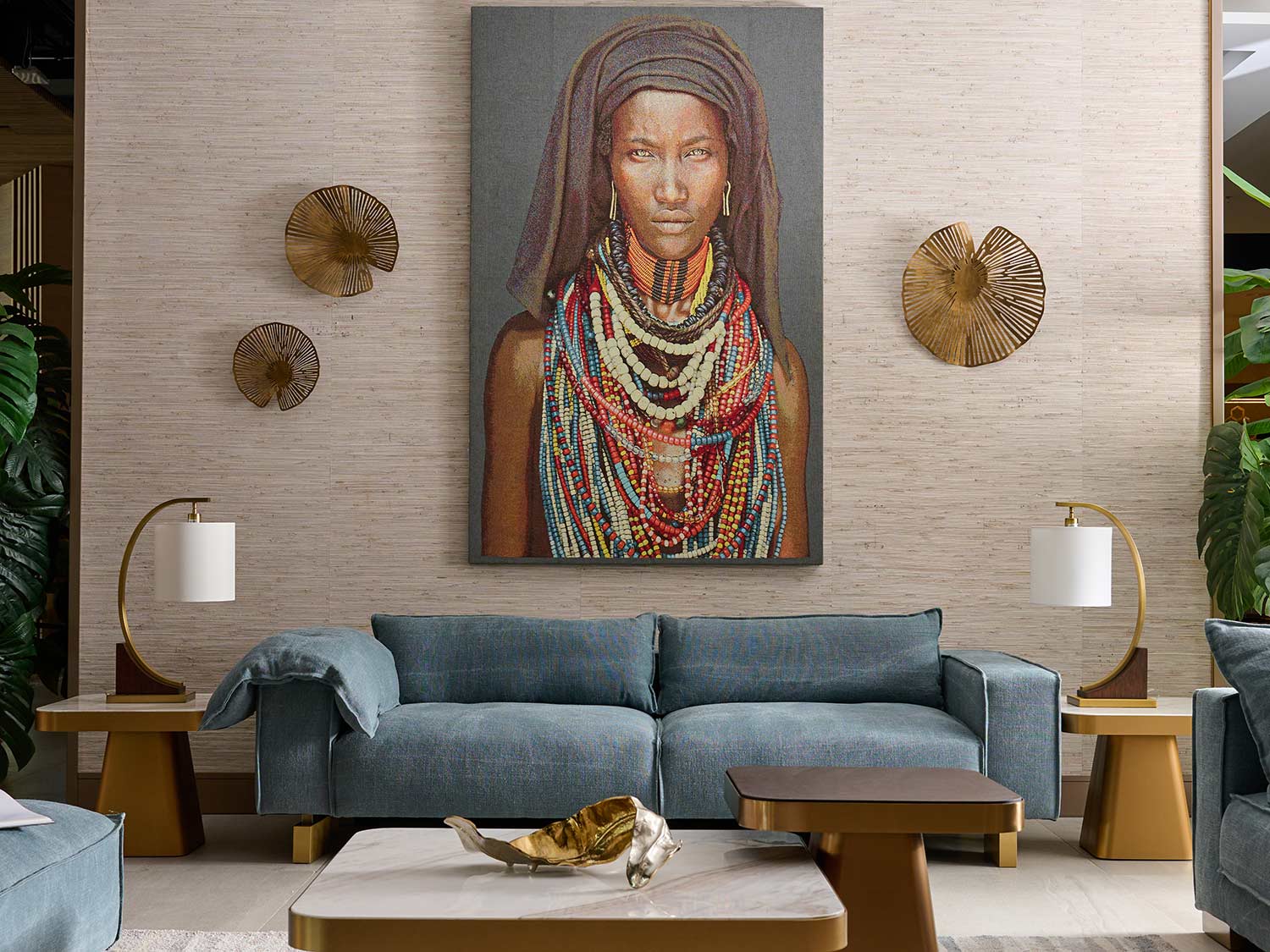
Our home is our sanctuary where we feel safe and relaxed. But it is also a place for entertainment – alone or with family and friends. And which is the best space to do it? The living room.
We might not give the deserved value to the living room in a home, but this space has great importance. It needs a certain level of versatility to work as a formal area to receive guests but also operates as a casual space for leisure and family time. Architect and interior designer Elias Nader from EN Interiors says: “The living room is the most important space in the house beside the bedroom and the most used space in a house on a daily basis.”
During Ramadan, this room tends to be more populated with the many gatherings during the Holy Month and Eid celebrations. We look more closely at it to better understand how to choose the right elements to make it cosy and functional.
SEATING ARRANGEMENT
One undeniable aspect is that it is a place to sit and spend some time, formally or casually. How you choose and position the seating elements is quite crucial. But to select the best combination of sofa + armchair + ottomans, you need to identify the primary purpose of your living room. Despite being a space with many functions, one stands out, and you should stick to it.
If it is mostly dedicated to movie nights, browsing your smartphone or if you enjoy the old habit of sitting in the living room to read, then you should opt for large sectional sofas. They are spacious and year after year, designers are coming up with items that are more similar to beds where you can easily fall asleep. The Italian brand Minotti is an authority on the subject and has many interesting options.
However, if the key purpose of your living room is to host guests, opt for some differentiated seating solutions. A popular option is to have two sofas with a coffee table in between, an armchair, a pouffe and ottomans to create a pleasant space to encourage conversation and help it flow. An arrangement where guests can easily interact, close enough to hear each other and with handy coffee tables in the centre of the space plus a few accent tables at the corners for people to happily chat and sip their cups of coffee at the same time. An important aspect to consider is not to crowd the space and leave enough room for visitors to move around. But that doesn’t mean pushing everything against the wall; create a nice flow with the elements to make it enjoyable and exciting. When it comes to decorating the room, Elias says that its character must reflect the personality of its user – mainly in terms of colours. “We always suggest that if the owner likes dark hues, to always keep them on the wall behind the sofa or somewhere they won’t be facing for long hours. We advise using light colours in the background of the TV unit for a comfortable scenery while binge-watching their favourite shows,” he explains.
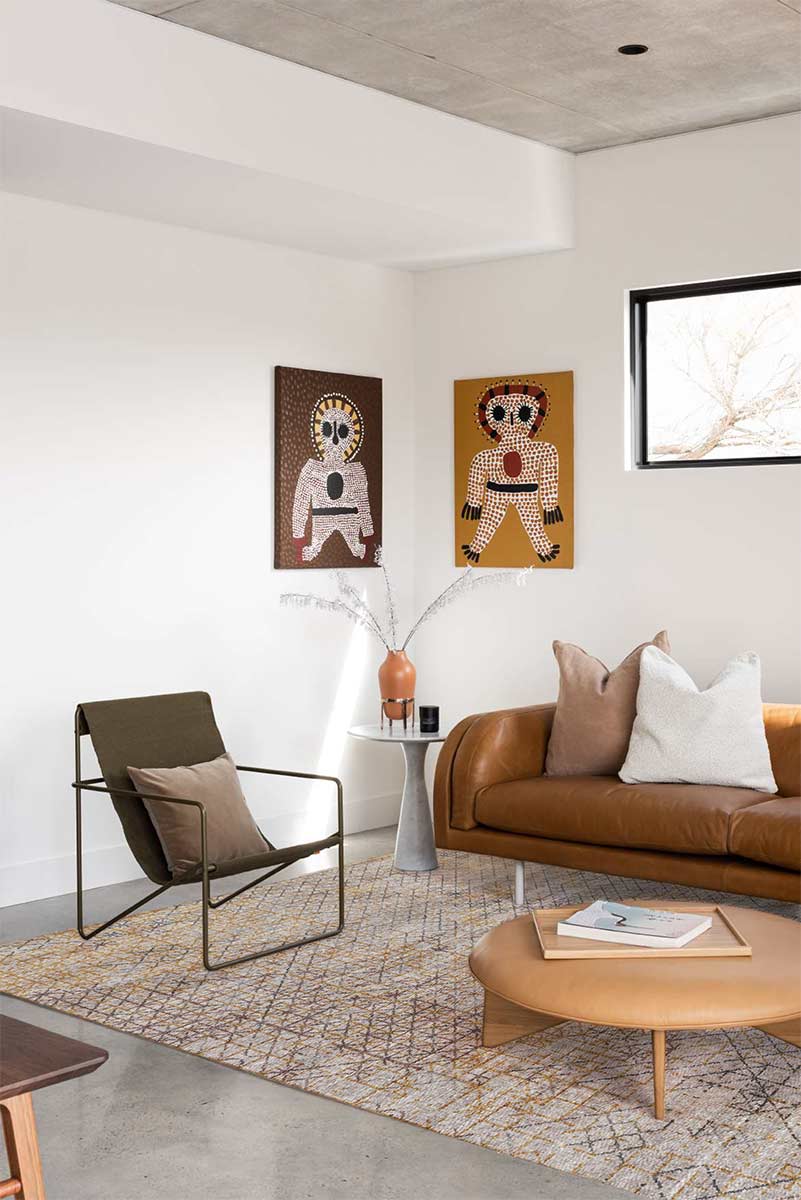
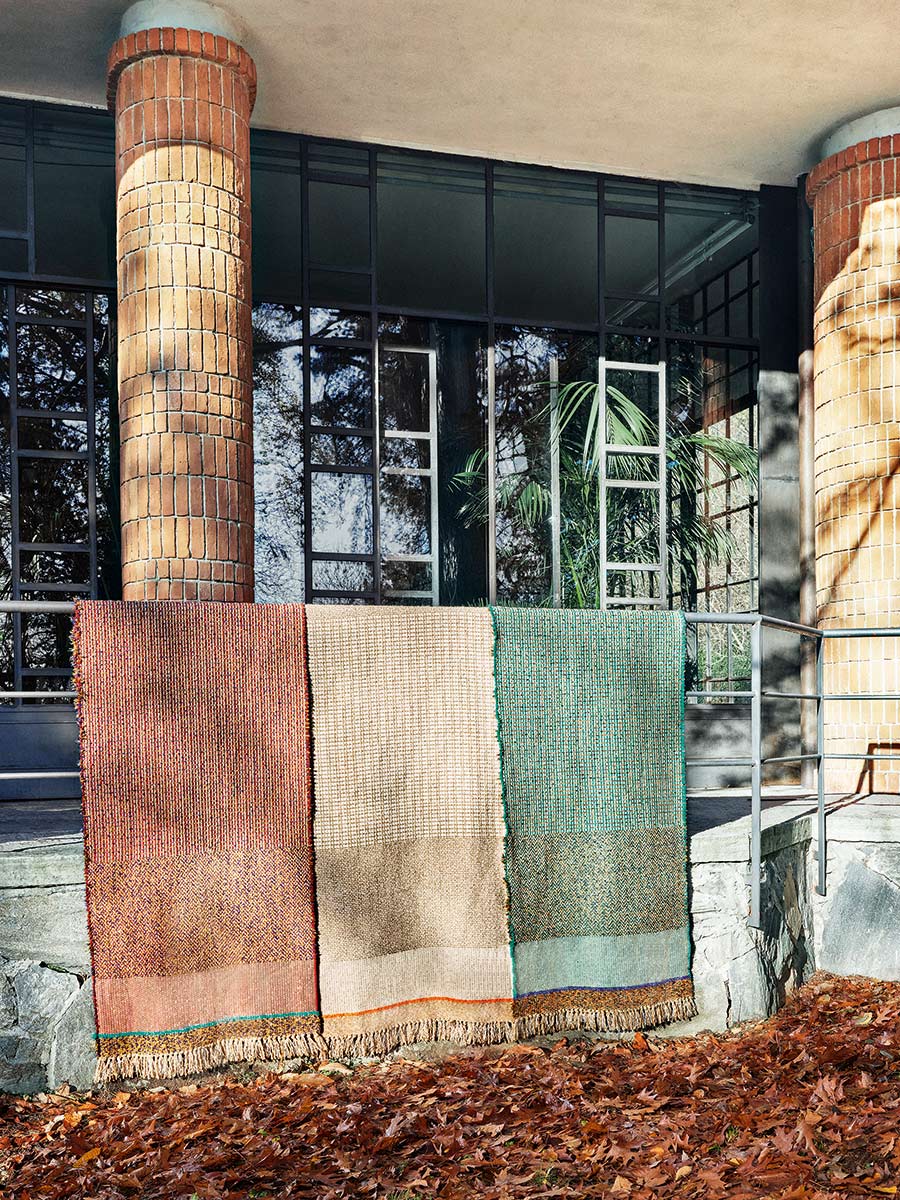
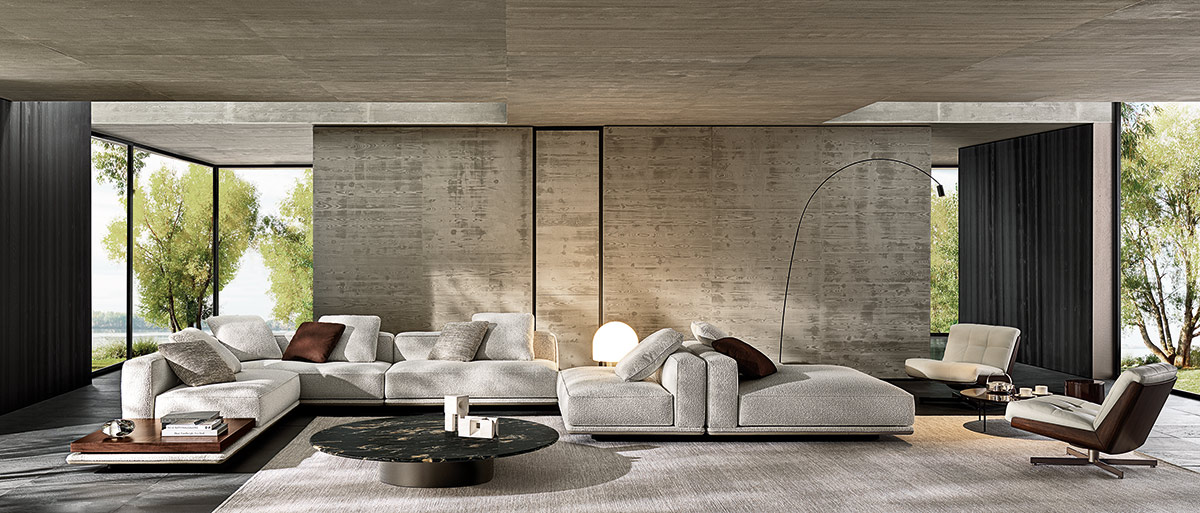
FINDING BALANCE
Regardless of the purpose, the space needs to be cohesive. To achieve that, choose similar styles, but play with variation and texture to build an engaging atmosphere. When we say similar, it doesn’t mean matching everything. You should actually be careful with sofas and other seating coordination; make sure they are not too unified in colours, fabric and styles; otherwise, you risk having a flat space that will look like a furniture shop catalogue.
The easiest way to unite without looking boring is to make good use of colour. Follow the rule of 60-30-10, where 60% of the objects have a predominant shade, repeating it on many surfaces, such as walls, tiles, rugs and sofas. You then add contrast in 30% of the space using a different hue; you can apply it to pillows, throw blankets, art and small tables. And last, with the 10%, go bold! Choose a vivid tone to create funky accents and add personality to your space. Often, this addition can be done by applying a metallic surface to many details like handles, coffee table legs, accessories and lighting.
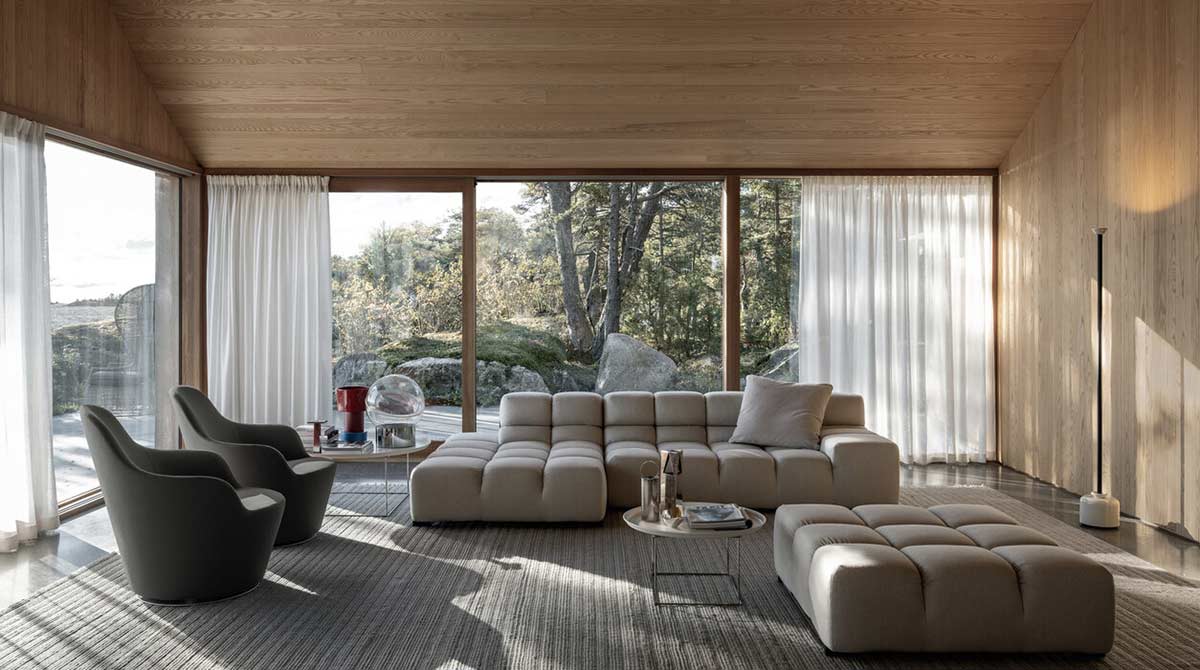
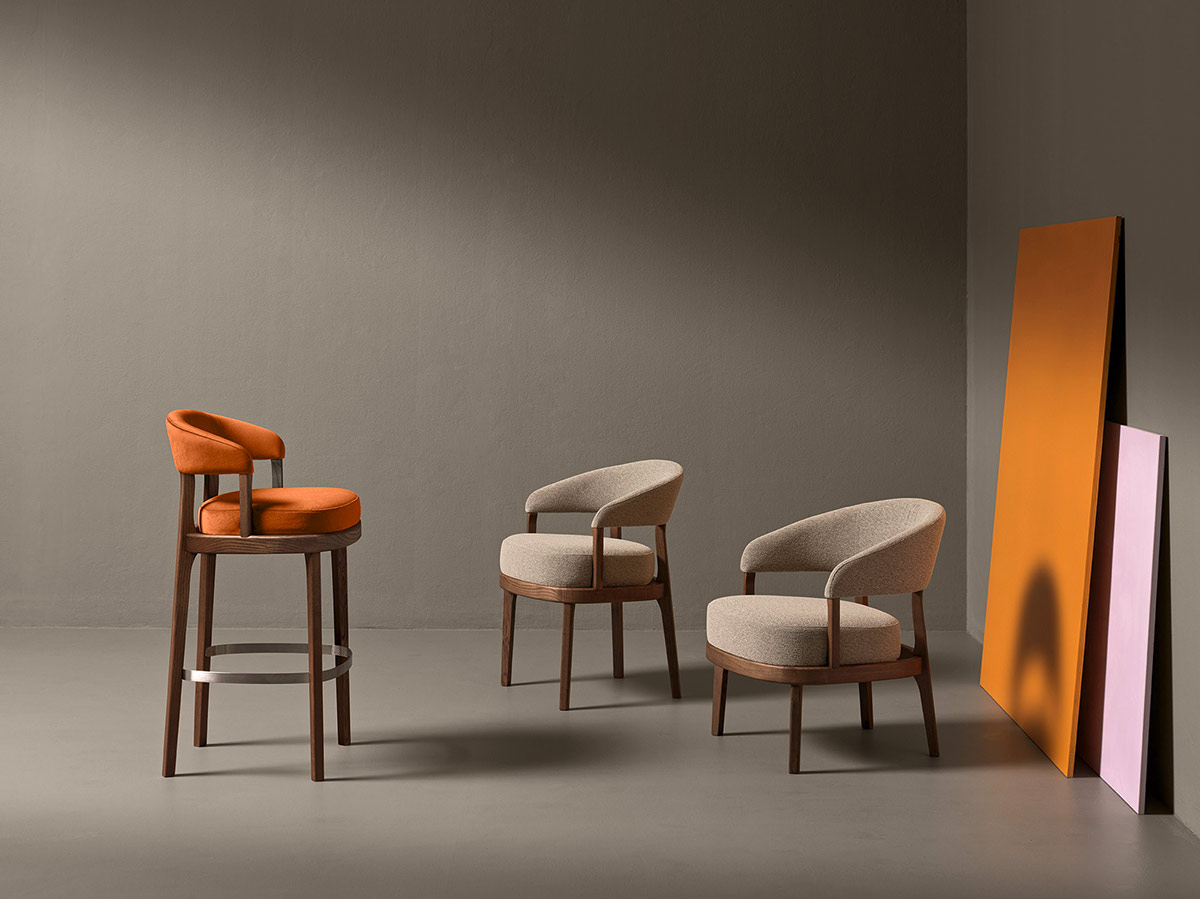

THE PROTAGONISTS
There is an element often dismissed, but that makes all the difference: the rug. This décor item can play a central role in a room. It is a piece that puts together all the different compositions. But remember, the carpet needs to be as big as possible. Ideally, all the seating elements and coffee tables should sit on it. However, if not possible, putting the front legs of your sofa on top of the rug is an good solution.
Another aspect to look at is the lighting. The best way to cater to the room’s different functions is to display the lighting on three levels: a leading chandelier, wall lights and lamps. The latter help create a soft ambience. LED strips and indirect lighting in alcoves can add elegance to the area and enhance the beauty of bookcases, furniture or decorative items.
If you like art, remember that the bigger, the better and that the painting’s centre needs to be installed at eye level and preferably 20 centimetres above furniture, such as consoles and sofas.
For more homes inspiration, connect with @e.n.interiors,
@minotti_spa, @alhuzaifauae, @bebitalia, @battilossi,
@gervasoni1882 and @verywooditaly
